Full Guide To Aventurine vs. Amazonite (This Is The Difference)
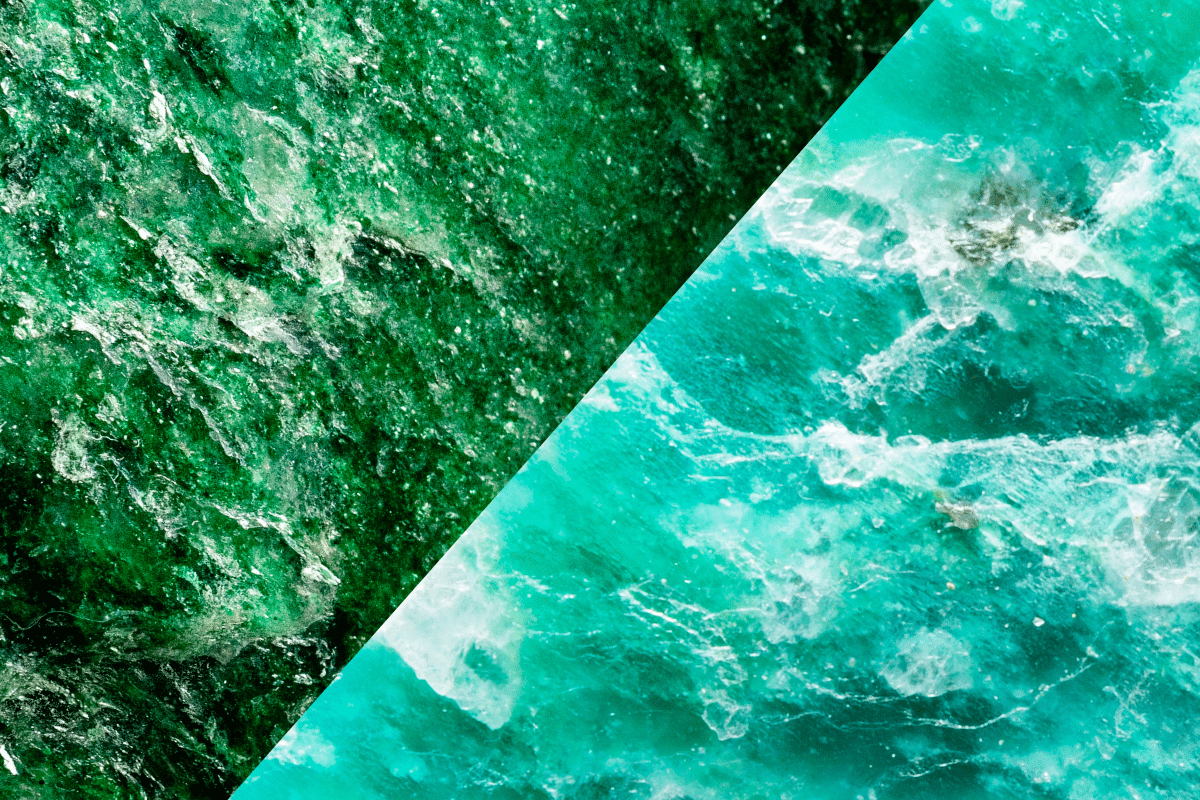
Aventurine and amazonite are two stones that are often confused. Though they have a similar look, there are some distinct differences. Not only in their appearance but also in their metaphysical use.
Both stones are blue/green, but aventurine is slightly translucent and has a glittery effect. Amazonite is opaque and has white stripes. Each stone is associated with different zodiac signs, elements, ruling planets and chakras.
Continue reading if you want more in-depth information on the (meta)physical difference between these stones as well as how to care for each of them.
Want more help or information? If you have any more questions after reading this blog post or want a personal answer for your specific situation, join the free Facebook group! We promise you’ll get an answer from either our team members or a community member.
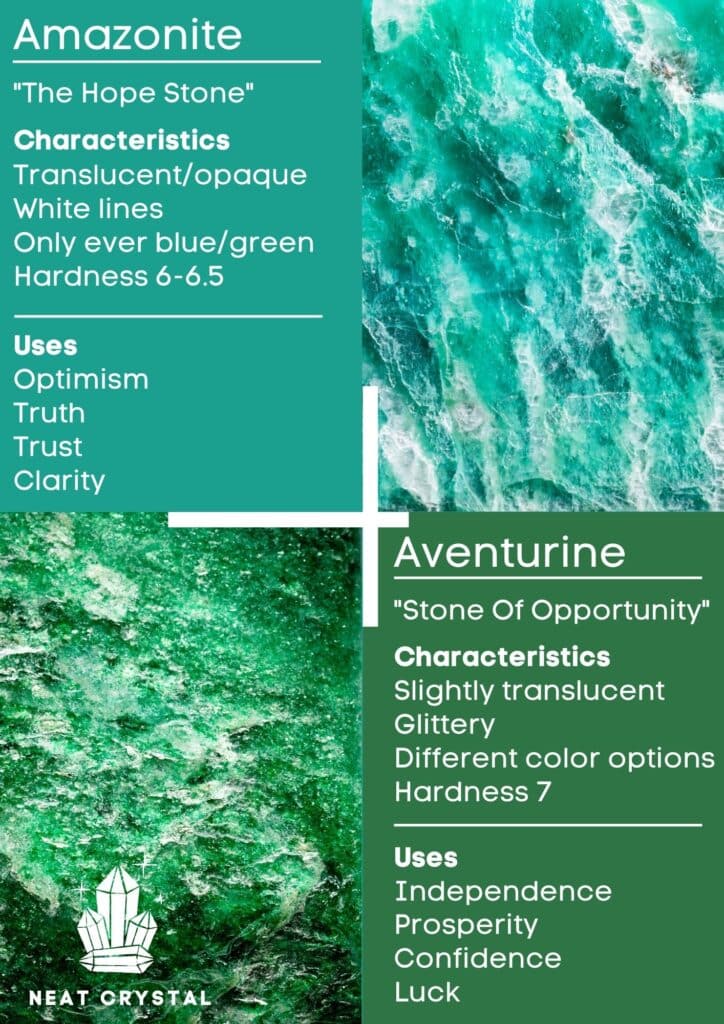
Aventurine vs Amazonite – How To Tell The Difference
In order to tell the difference between aventurine and amazonite, we can look at the color, pattern and opacity of a stone. An opaque stone without a sparkling effect is likely amazonite. A more glittery, translucent stone is likely aventurine.
Color
Both aventurine and amazonite are (generally) green/blueish in color. For amazonite, this is the result of small amounts of lead which is naturally blue. Aventurine derives its color from chrome-bearing fuchsite, most commonly green but can also be other colors, like orange, yellow or gray. As a result, aventurine also comes in many different colors, whereas amazonite is only ever blue/green.
Also Read: Amazonite vs Aquamarine – What’s The Difference?
Pattern And Opacity
Aventurine naturally has something called ‘aventurescence’, which is basically a natural glitter as a result of some metal inclusions. Amazonite does not have this.
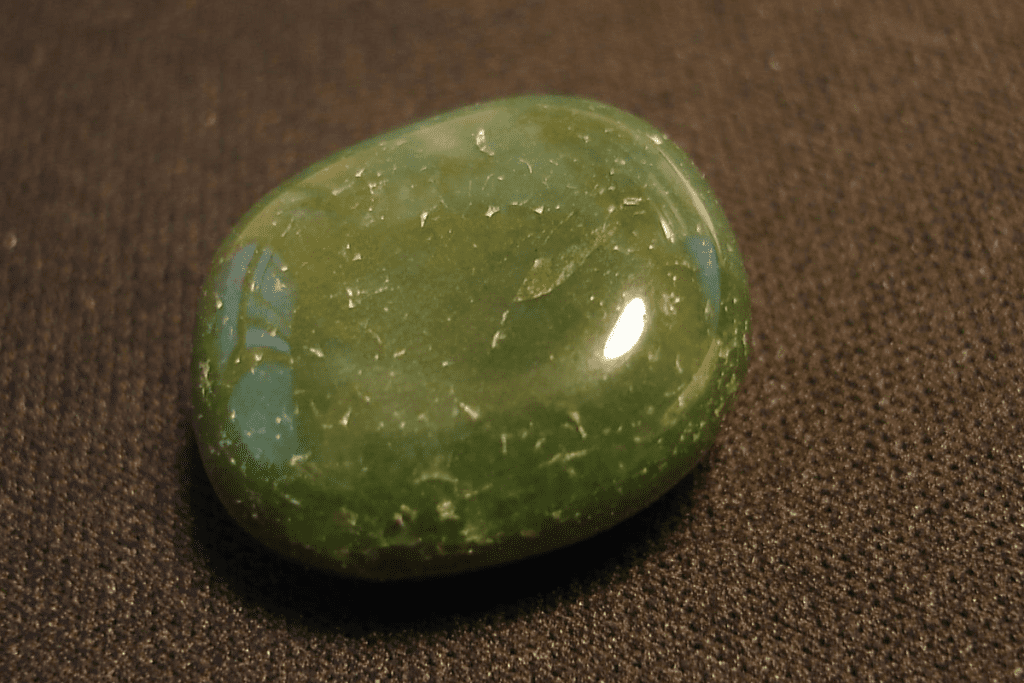
Aventurine also generally looks more translucent, whereas amazonite is more opaque.
If you have an opaque stone without a glittering effect, it is likely to be amazonite. If it is more translucent and sparkles, it is likely aventurine.
Also Read: Amazonite vs. Turquoise – What’s The Difference?
Beware, sometimes stones are sold as aventurine when this is not actually the case. If your aventurine has a very bright color, it is likely a dyed stone and not real aventurine.
Additionally, amazonite has more cleavage; a crackling effect that results in small white lines throughout the stone. The higher the quality, the less white streaks it has. Aventurine rarely has crackling, and even if it does, it is much larger.
Hardness
Aventurine has the same chemical structure as quartz, which is relatively hard; about a 7 on the Mohs scale of hardness. Amazonite only has about a 6 on this scale, making it a little more brittle.
If you’re unfamiliar, the Mohs scale of hardness determines a stone’s hardness by measuring how scratch-resistant it is. According to this scale, a stone can scratch any other mineral with a lower score. With aventurine being a 7, and amazonite a 6, the former could scratch the latter. For reference, talc is a 1, whereas diamond is a 10.
If you do not have your heart set on having amazonite, you might want to consider buying aventurine. It isn’t just more scratch resistant, but also cheaper.
Care
The slight difference between the 6 of amazonite and 7 of aventurine, in combination with the cracks that are in amazonite, means we need to care for each a little differently.
The fact that amazonite has more small cracks than aventurine, means that salt and water are more likely to damage this stone. Although every stone will have some miniscule cracks, amazonite simply has more of them, making it easier for salt and water to enter and expand them. This will leave your stone even more brittle. Aventurine is generally stronger and smoother, making it less likely to break.


Keep in mind that every stone that is left to soak will eventually turn dull and more brittle. Therefore, it is not recommended to soak crystals or gemstones.
The safest ways to clean each stone is by dusting them off, or giving them a quick rinse if need be. If you want to energetically cleanse them, the safest options is sound. This method, as well as other options are discussed in more detail in this post: “Can Amazonite Go In Salt?”
If you want to energetically charge them, both stones would be fine if you leave them in the sun for a little bit. Beware that too much sun can cause the stones to fade. Therefore, it is recommended to charge your amazonite and aventurine using moonlight instead.
This is explained in more detail in the following post: “Can Amazonite Be In The Sun?”
Location
Although amazonite derives it’s from the Amazon river, it has never been found there. Instead we commonly find amazonite in the U.S. (Colorado, Virginia), Myanmar, Ethiopia, India, Madagascar, Russia and Brazil, amongst other places.
For Aventurine, it most commonly sourced in India, although small amounts have been found all over the world.
Aventurine vs Amazonite – The Metaphysical Difference
Although the stones look similar, each stone has unique properties which might influence your choice to work with either of them. Below the different properties are explained, as well as the different chakra, planet, element, and zodiac sign associations for each stone.
Properties
Aventurine and amazonite don’t just look similar, they also have very similar energies. Both stones are calming and helps us to connect to our heart. They also both help us with communication and intuition.
In the table below you’ll find some of the properties for each stone. However, keep in mind that crystals are meant to be used intuitively. Although amazonite is generally thought to promote honesty, maybe you personally find more of this energy with aventurine. Always use your own intuition over what is generally accepted.
| Aventurine | Amazonite |
| “Stone of opportunity” | “The Hope Stone” |
| Independence | Optimism |
| Prosperity | Truth |
| Confidence | Trust |
| Luck | Clarity |
Chakra
As you might know, everyone has 7 chakras, each representing a different part of ourselves. All crystals can be linked to a different chakra and thus help us in different parts of our lives. You’ll find each chakra below, from lowest to highest, as well as which color stone best matches the energy centre.
- The root chakra (Muladhara): our sense of stability and security – red or black.
- The sacral chakra (Svadihsthana): the emotional body, sensuality and creativity – orange.
- The solar plexus (Manipura): self-esteem and your overall personal power – yellow.
- The heart chakra (Anahata): love, for ourselves and the world around us – pink or green.
- The throat chakra (Vishuddha): communication, self-expression and trust – blue.
- The third eye chakra (Ajna): our intuition, perception and overall awareness – violet.
- The crown chakra (Sahasrara): the connection to the divine, transformation and clarity – indigo, clear, white.
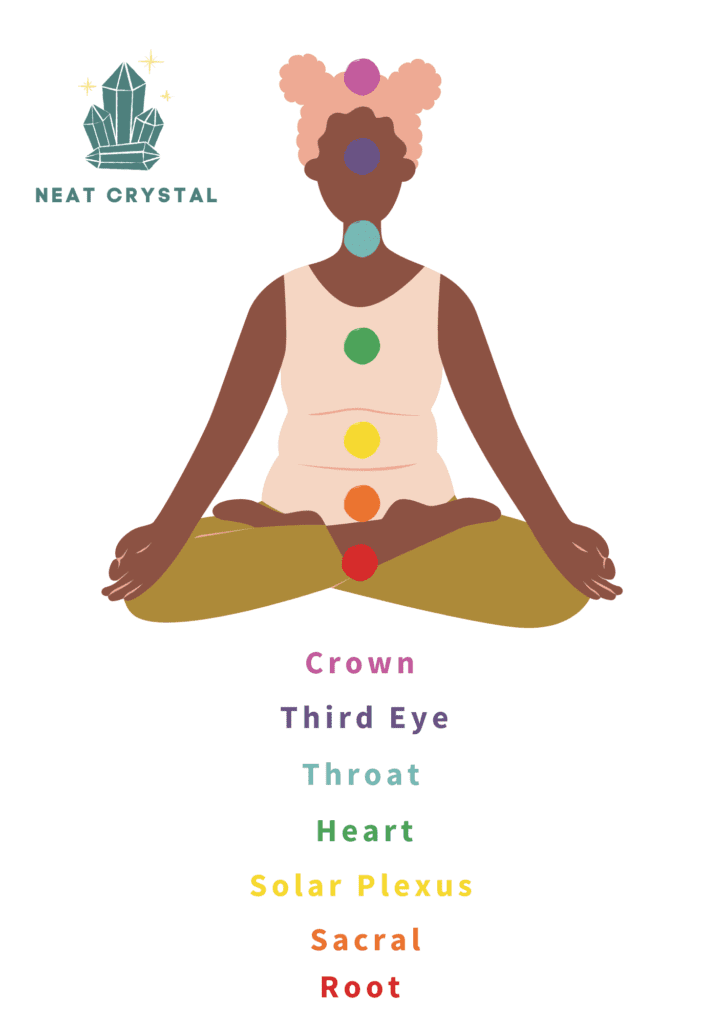
As a result, green aventurine is linked to the heart chakra, and amazonite is generally associated with the throat and heart chakra. The different types of aventurine relate to different chakras. For example, yellow aventurine is perfect for the solar plexus chakra.
- Also Read: What Chakra Is Amazonite?
Ruling Planet
Crystals and planets are closely connected in astrology. Each planet has a different energy and so does every crystal. As a result, we can link crystals and planets with similar energies.
Whereas amazonite is associated with Uranus, the planet of originality and innovation, aventurine is connected to Mercury, the planet of communication and intellect.
Unsurprisingly, these planets are closely linked, just like amazonite and aventurine are. Whichever stone is best for you depends on which one you are more attracted to.
Zodiac Signs
We can determine which zodiac sign matches with a crystal by looking at the ruling planet and birthstone. When we say a sign is ruled by a planet, we simply mean that this planet has more power over a sign compared to other planets. Every sign has a ruler and every crystal or gemstone is associated with a planet.
As mentioned, Amazonite is associated with Uranus, which rules Aquarius. Aventurine, on the other hand, is connected to Mercury, which rules Virgo and Gemini.
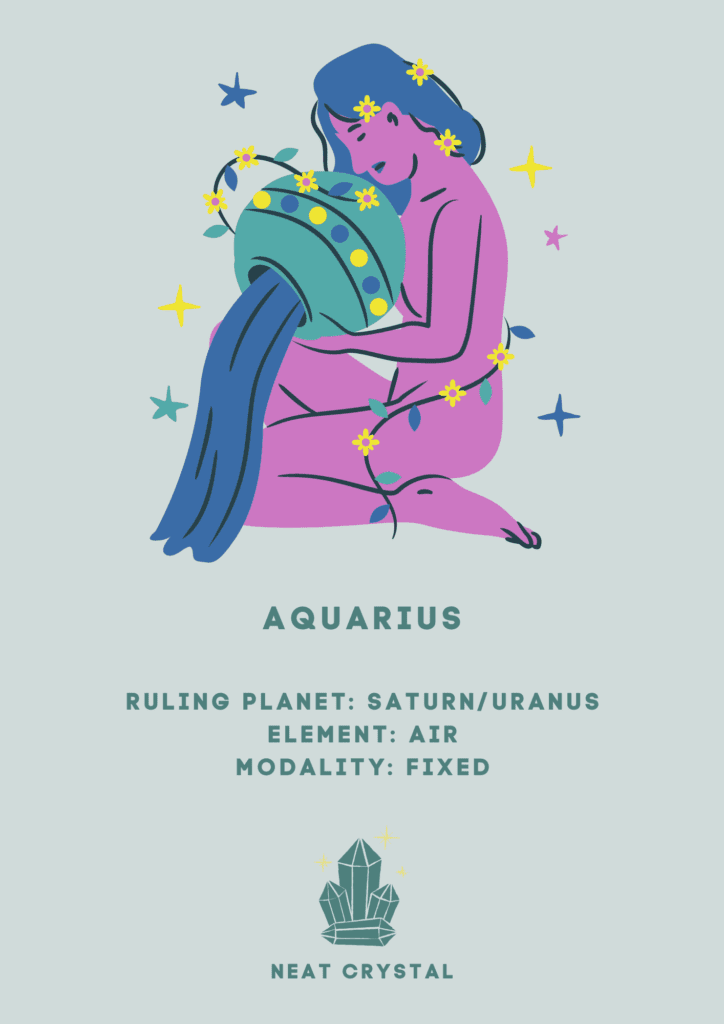


However, neither aventurine nor amazonite is a mystical, ayurvedic, traditional or modern birthstone.
Element
Many cultures have developed the idea of elements to explain nature. In the west, this notion was created by the ancient Greeks and consisted of 4 elements: Earth, Air, Fire, Earth. In India, another element is added: Akasha, representing the foundation of the other elements.
The 4 elements represent the following:
- Earth for personal growth, stability and security
- Water for love, friendships and emotions
- Air for intellect, wisdom and communication
- Fire for energy, passion and action
By looking at a crystal’s or gemstone’s properties, we can determine which element fits best.
Both aventurine and amazonite relate to the water element, although amazonite is often also linked to the earth element. Again, you might find that you want to use aventurine to promote communication, in which case it would be more linked to air.
- Also Read: What Element Is Amazonite?
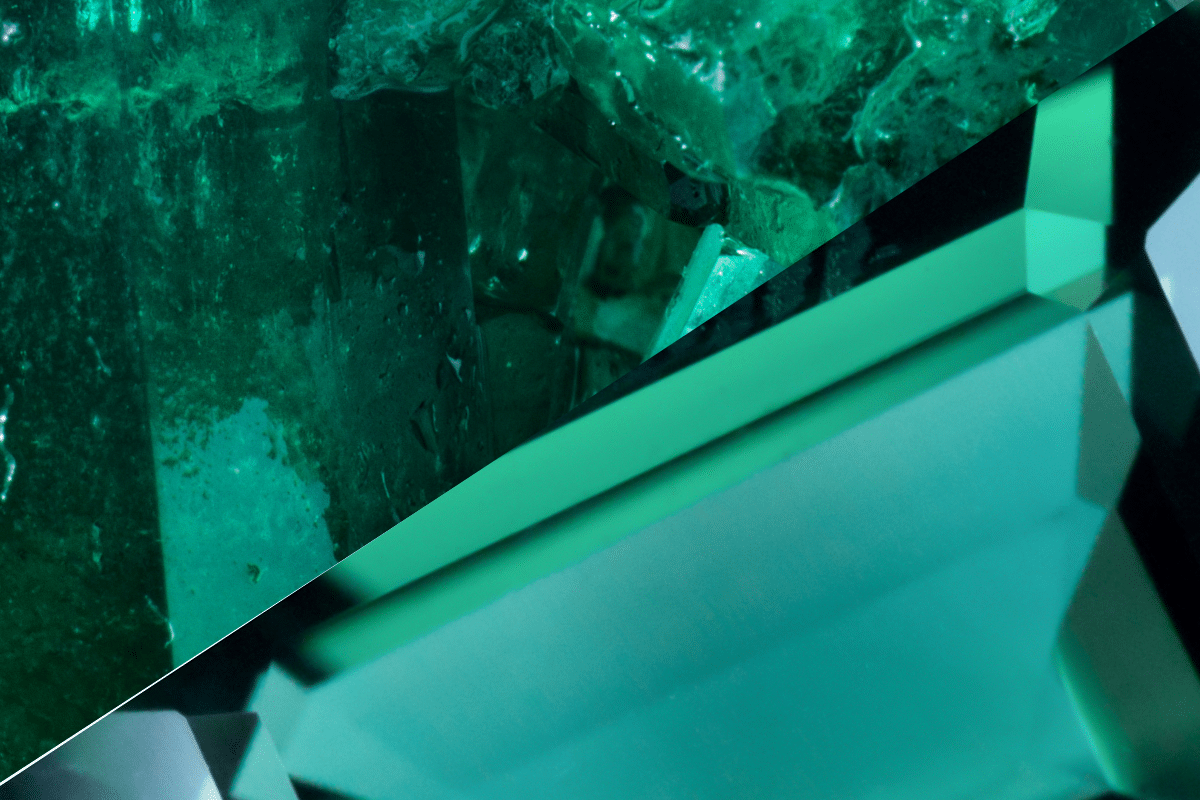

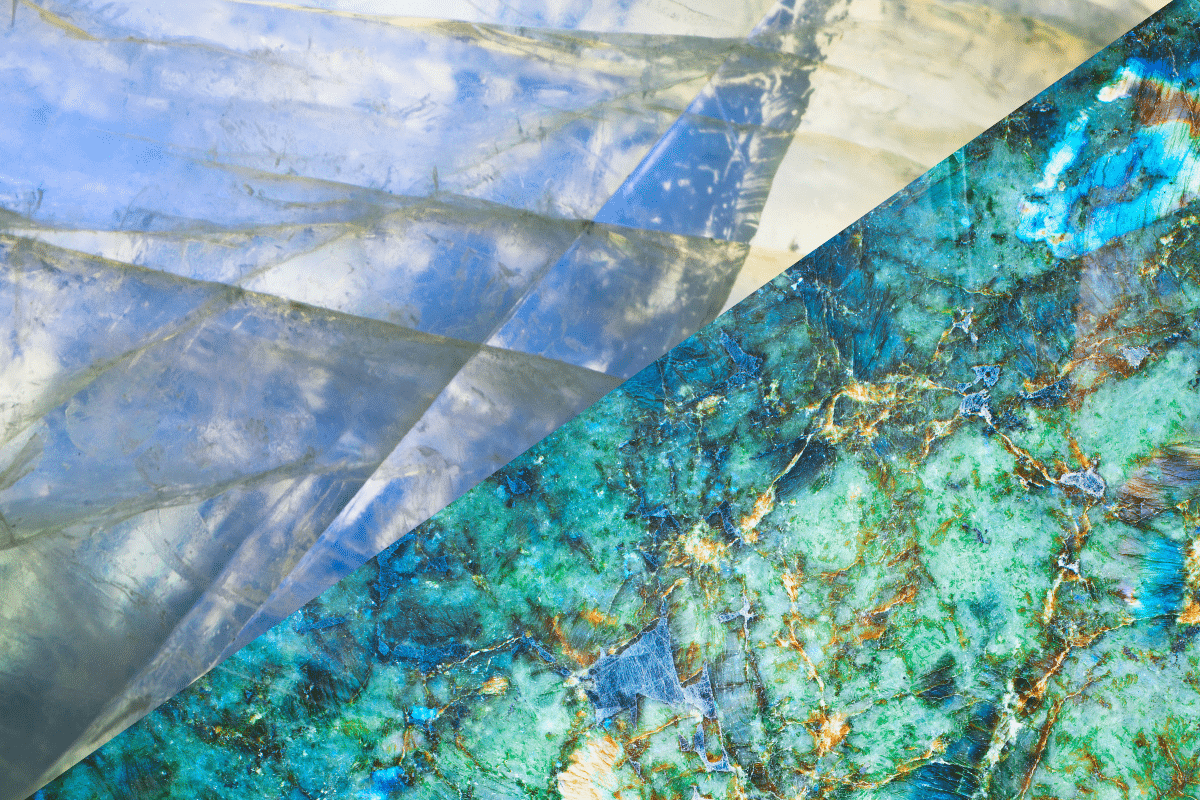


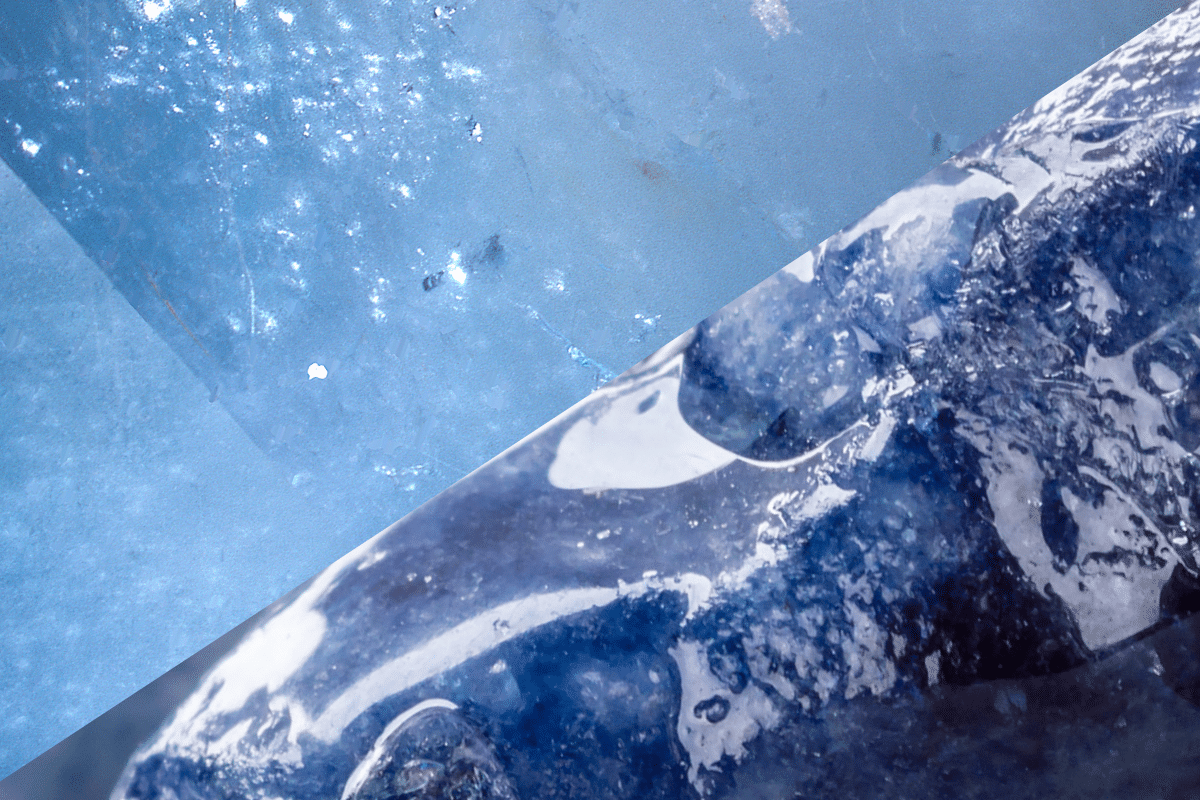
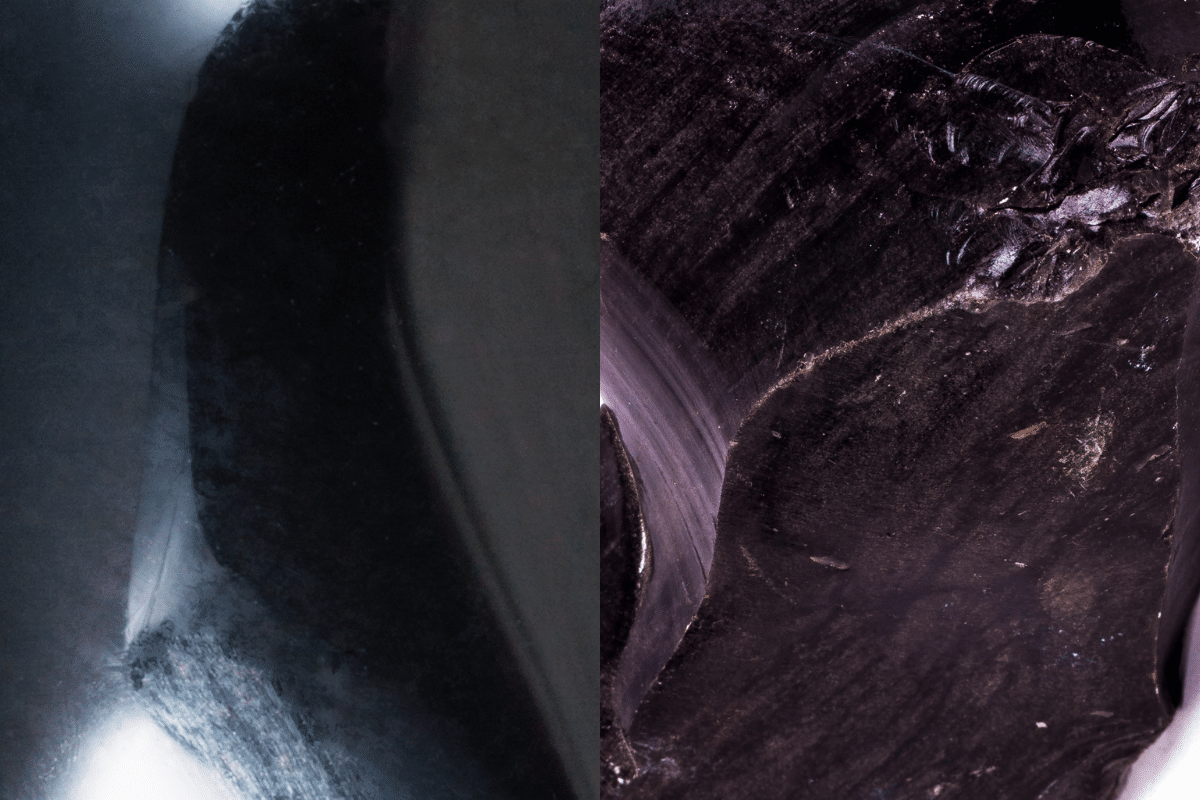
12 Comments